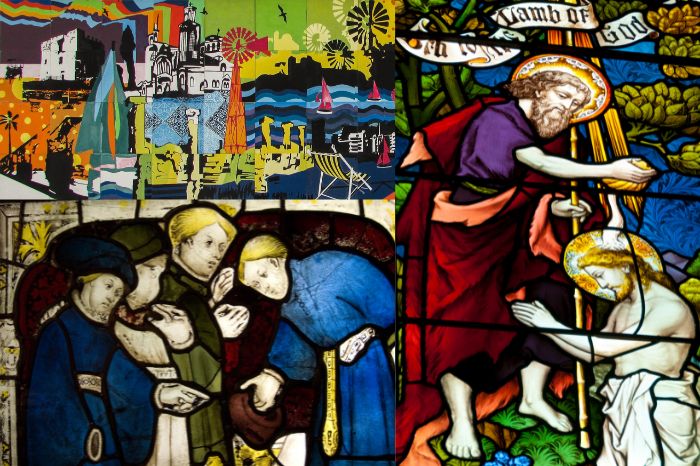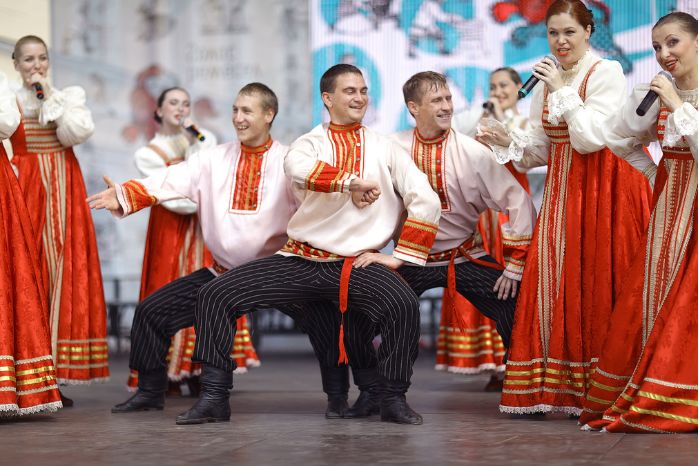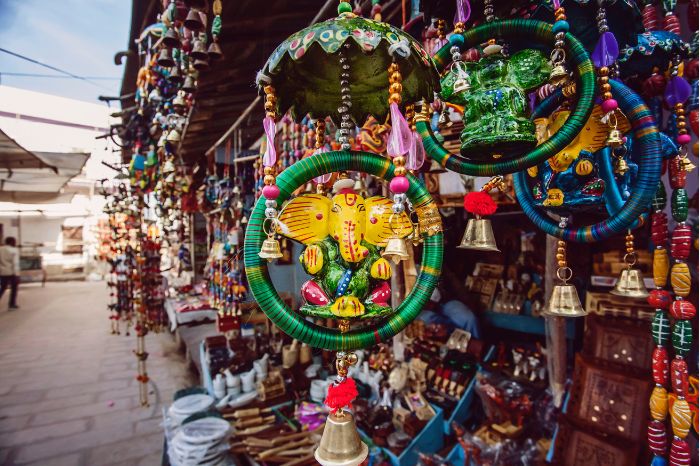Ethnic Tourism: What Is It, Why Do It, and How to Do It Righ
Tourism has become increasingly popular as the years have gone by, and it’s not hard to see why: you get to explore the world, learn about different cultures, try new cuisines, meet interesting people, and enjoy the sites.
Table of Contents
Everyone likes to travel and can have different tastes some like mountains, while others like beaches. This taste to travel has given rise to different types of tourism.

| Read: 11 Most Affordable Cities To Visit In Europe
Types of Tourism
There are many types of tourism depending on the intention behind travel. Some I like to mention are:
- Slum Tourism
- Medicinal Tourism
- Dark Tourism
- Heritage Tourism
- Adventure Tourism
- Eco-Tourism
- Wild Life Tourism
- Business Tourism
- Educational Tourism
- Ethnic Tourism
In this article, Ethnic Tourism is highlighted.
It’s no wonder, then, that more and more people are exploring foreign lands through their vacations each year—but how do you know if your trip will be inclusive of the culture around you or if it will simply reinforce stereotypes?
Ethnic tourism has become more and more popular in recent years as travel becomes easier, faster, and cheaper than it ever has been before.
There is no better way to experience life in a new culture than by using your senses. Your sense of taste, touch, and smell will be stimulated in new ways as you learn about other cultures through food, customs, and architecture.
You’ll get an up-close look at a country’s people and history while exploring everything from ancient ruins to the latest techno-dance club scenes.
However, when you look at the general population of tourists, you can see why this might not be such a great idea after all.
According to the UNWTO (United Nations World Tourism Organization), only 18% of international tourists are women, while 59% are men – the remaining 23% are either children or remain unknown.
This means that only 41% of travelers have female representation in their traveling parties, despite the fact that women make up half the world’s population.
What is ethnic tourism?
Ethnic tourism refers to the travel of tourists who want to experience the culture and traditions of different cultures other than their own.
Ethnic tourism is the exploration of people, culture, and heritage through travel.
This type of tourism is not new but has been growing rapidly in recent years as more people seek out authentic experiences and interactions with locals while traveling.
It has been around for centuries, but only over the past few years has it reached new heights in popularity with people all over the world.
A form of tourism that is based on cultural heritage, ethnic identity, and ethnicity.
This travel option can appeal to everyone, regardless of how much money you have or how much you like traveling to new places; as long as you’re interested in seeing a new part of the world and learning about different cultures, this travel trend may be perfect for you!
Here’s what you need to know about ethnic tourism.
In the case of the United States, this tourism is often African American or Latino in nature. It can also be referred to as cross-cultural tourism or ethnic tourism.
Where it came from
The origins of ethnic tourism can be traced back to the nineteenth century when people in search of the exotic and the primitive started visiting South America, Africa, and Asia.
They were not just looking for new places to visit, but also for new cultures to experience.
Today, ethnic tourism has become more popular than ever before. People are traveling across the world in order to explore other cultures and traditions with a sense of adventure, curiosity, and openness.
As it is with any type of travel, there are certain planning that one should take before embarking on their journey.
Planning before travel
What to do
- Find out more about the country’s culture and history.
- Consider visiting popular attractions that are the most representative of their culture.
- Plan to visit at least two countries so you can see how different cultures affect your vacation experience, as well as be exposed to new foods, languages, and customs.
- Plan for a mix of adventurous activities and relaxing days on the beach or by the pool in order to get an authentic taste of what a country has to offer its visitors.
- Be sure to use sunscreen, pack plenty of water, wear comfortable clothing and bring sunglasses with UV protection so that you stay healthy during your travels!
Don’t miss these activities!
- Visit an ethnic festival or celebration.
- Go on a walking tour of your city to explore different neighborhoods and cultures.
- Visit a grocery store that specializes in ethnic foods.
- Find the nearest ethnic restaurant and try a new dish.
- Participate in an activity that is specific to your culture such as yoga, music lessons, or cooking classes.
- Travel abroad to experience other cultures firsthand.
Tips if traveling
- Before traveling you must aware of the currency, climate, and local rules of that country.
- You must take travel insurance.
- Check the flight connections from your city.
- Besides this, you must arrange a good travel bag, comfortable clothes, and traveling shoes that are a must.

What is cultural representation?
Cultural representation is the way in which a culture is represented to a certain group of people. For example, many Hollywood movies are about white, heterosexual people.
As a result, these groups are misrepresented. So what does this have to do with tourism?
Well, as an increasing number of travelers from different countries venture to other parts of the world, they want to experience authentic cultural experiences while they’re there.
This includes not only food and sights but also customs and traditions that may not be readily available if you’re just staying in your own country.
Tourism affects the life of the local population in a positive as well as in a negative way.
Though the tourism industry has been criticized for perpetuating harmful stereotypes by commodifying other cultures, it can also be used to spread awareness and help change perceptions through cultural exchange.
How does culture affect us?
Culture affects us in a multitude of ways, from the language we speak to the music we listen to. For many people, culture is the one thing that keeps them grounded and allows them to feel like they have a sense of home.
Culture is also what shapes our values and morals. In this way, culture influences every aspect of our lives. But how does it affect tourism?
Culture has both positive and negative effects on tourism. On one hand, cultural landmarks are popular tourist destinations because they can provide individuals with a window into another society’s beliefs, customs, and traditions.
How is culture presented in travel?
Culture is an integral part of travel. It’s what makes each place unique and provides a glimpse into the daily life of locals.
From food to history to entertainment, culture ties everything together in a way that can’t be replicated.
This is why it’s so important for travelers to take the time to experience the culture first-hand when they’re visiting a country, instead of just visiting attractions or restaurants.
How do we travel responsibly with cultural awareness?
Travel responsibly doesn’t mean you have to give up your culture and identity (cultural identity) while you’re abroad. In fact, it’s the opposite.
There are many ways to be culturally aware without giving up any of your own customs.
It’s important to remember that no one should tell you how to live your life, but they can help guide you in the right direction based on what they know best.
Study where you’re going and talk with locals beforehand.
Know what customs may be different from yours and don’t judge a country by how it looks from the outside.
What are some positive examples?
There are so many different cultures around the world, and it is important for people to be able to experience all of them.
One way this is done is through ethnic tourism, also known as cultural representation. This is when a particular culture or country offers a tour that highlights its history, customs, and food.
For example, Egypt offers Nile River Cruises, and African safaris, while Argentina celebrates its gaucho heritage by hosting the annual National Festival of Gauchos.
What are some negative examples?
It’s not always easy to make sure that everyone is represented fairly on tours or in books. For instance, if an author visits a small town in Utah, they may only write about Mormons or visit one Mormon church during their stay there.
How it can become problematic?
It is easy to assume that the tourism industry, at its core, is simply about offering potential tourists the opportunity to experience a new culture.
This may be true for many Americans and Europeans who are looking for a cultural adventure or an authentic experience.
However, if you are not white and living in a colonized country, you have probably experienced some form of tourism as an economic and cultural invasion.
For example, my family lives in Guyana and they often get tourists visiting their village asking them to perform dances or sing songs. They even go so far as to ask people to sell the crafts that they made at home.
How we can fix this problem
In this digital age, it’s easier than ever to explore the world virtually and avoid the hassle of being out in public.
That makes it even more important for destination marketing organizations to make their destinations as accessible as possible.
VR tours are an effective way to promote your destination while also highlighting the cultural diversity that draws people there.
The immersive experience enables potential visitors to see what they’re missing by staying at home with their screens and gives them a chance to explore other cultures firsthand.
In addition, VR is a space where minority groups can have a voice and share their perspectives on what culture means to them.
This is important because so often people from dominant cultures such as white Americans assume that they know everything about minority cultures without ever asking or listening.

Where to go?
If you’re looking for a more authentic experience, then there are better places to visit in Asia.
From the busy streets of Bangkok to the serene Buddhist temples of Kyoto, Asian culture is vibrant and exciting.
To make your trip even more memorable and rewarding, be sure to visit some of these lesser-known tourist destinations in Asia.
India: India is the most populous country in the world. It has a population of over 1 billion.
You can find a diversity of cultures and ethnicity in this county, so India is one of the best places to experience ethnic tourism.
Ethnic tourism is an important aspect of cultural tourism and it provides travelers with an opportunity to explore different parts of the world while immersing themselves in a different culture and way of life.
There are many places to visit in India if you want to experience ethnic tourism.
Take a trip to Kerala where you can find some people that still live as they did centuries ago or visit Bhutan and get introduced to Buddhism, which is dominant there.
Vietnam: Explore the culture and cuisine of Vietnam, a country that has been influenced by both China and France.
Vietnam shows a lot of cultural diversity.
Check out Hanoi’s Old Quarter for an escape from bustling city life, or take a slow boat down the Mekong River to discover untouched villages.
Thailand: Head over to Thailand for an exotic mix of cultures with Hindu temples, Buddhist shrines, and ancient Khmer ruins all within reach.
Visit Bangkok for its lively nightlife, or explore southern Thailand’s white sand beaches lined with swaying palm trees!
Mexico: Experience the hustle and bustle of Latin America in Mexico City or any other number of vibrant destinations in this diverse region.
Mexican culture is mainly influenced by its native inhabitants and the culture of Spain.
Mexican culture is described as the ‘child’ of both western and native American civilizations.
Other slight effects comprise those from other regions of Europe, as well as Asia, and Africa.
New Zealand: Experience the mix of different cultures from old Polynesian culture to more recent American, Australian, Asian and European cultures.
What can we do as travelers to ensure we’re giving back more than what we take from a place?
- Do your research and plan, be prepared for what you want to see, and know the prices before you arrive.
- Be open to new things! Go with an open mind and take in all of the new experiences and people around you.
Learning about different cultures is one of the best parts of travel! Plus, it’s always nice to get feedback from a local on where they would recommend visiting or what food they think is their favorite dish!
- Be respectful of local customs and traditions- this includes dressing appropriately, respecting monuments, not littering, etc.
Conclusion
Tourism provides sustainable development in rural areas especially if they have historic preservation or some cultural expressions.
- Ethnic tourism is not just about sightseeing – it’s about living the culture.
Cultural representation is an important part to form the image of a certain country’s culture in everyone’s mind.
Consequently, travelers must find time to experience the culture first-hand when they’re visiting a country, besides just visiting attractions or restaurants.
Both are co-related. So, it’s not wrong to say that Ethnic tourism provides a sneak peek into a variety of cultures, into another society’s beliefs, customs, and traditions.


